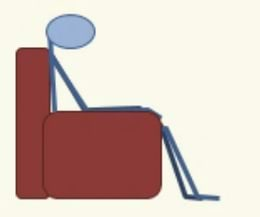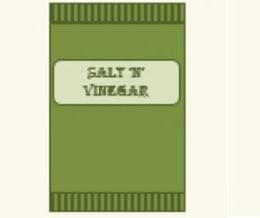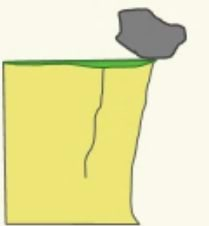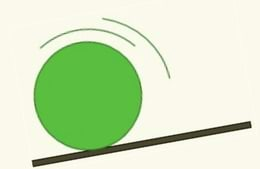Learning focus: | When a force makes things change it mechanically transfers energy between different energy stores. Friction transfers energy mechanically into a heat store of energy. |
Observable learning outcome: | Identify actions that transfer energy |
Question type: | Diagnostic, simple multiple choice |
Key words: | Energy store, energy transfer, chemical, heat, gravitational, kinetic |
In teaching energy the BEST resources have adopted a framework based on ‘energy stores’ and ‘energy pathways’ which is advocated by, amongst others, (Boohan, 2014), (Millar, 2014) and (Tracy, 2014). As Millar (2014) says, this approach “is not perfect - but it is adequate and significantly better than [approaches] based on lists of ‘forms of energy’.” A clear guide to this approach can be found on the Institute of Physics’ website (Institute of Physics).
When Solomon (1983) asked children to write three or four sentences showing how they use the word ‘energy’, she found that they predominantly think about energy in terms of:
- Human activity - I’m tired because I have run out of energy or I can run very fast because I have a lot of energy
- Health - exercise is good for you because it builds up your energy, when we run out of energy we need medicines and vitamins
- Food and fuels - some objects contain a lot of energy that can be consumed and then used up to help us move about and to make other things happen
Driver et al (1994), also note that many students link energy with movement and force.
Rogers (2018) highlights that the precision in the language we use about energy is important. Because energy is an abstract concept we have to use words to describe it. He advises giving students opportunities to practise using language precisely to help them develop an accurate model of what is happening. This question focuses on the distinction between energy stores and examples of energy being transferred between stores – energy transfers.
A summary of the BEST approach to teaching energy can be found on the Best Evidence Science Teaching home page which is on the STEM Learning website (Fairhurst, 2018).
Students should complete the question individually. This could be a pencil and paper exercise, or you could use an electronic ‘voting system’ or mini white boards and the PowerPoint presentation. The answers to the question will show you whether students understood the concept sufficiently well to apply it correctly.
If there is a range of answers, you may choose to respond through structured class discussion. Ask one student to explain why they gave the answer they did; ask another student to explain why they agree with them; ask another to explain why they disagree, and so on. This sort of discussion gives students the opportunity to explore their thinking and for you to really understand their learning needs.
Equipment
For the class:
- Metre ruler (a wooden ruler works well)
- Supports for each end of the ruler (e.g. piles of books)
- 2N weight (200g mass) – it is important that it is hard to detect flexing of the ruler when this weight is added, so its size may need to be adjusted to suit the particular equipment used.
- 10N weight (1kg mass)
Differentiation
You may choose to read the questions to the class, so that everyone can focus on the science. In some situations it may be more appropriate for a teaching assistant to read for one or two students.
There are energy transfers in 1 and 4 as the human body carries out a multitude of functions. Some students may consider these as situations in which the human has ‘run out’ of energy which means there can be no energy transfer.
In 2 and 3 there is a store of energy. Food in particular is linked to energy. Students who see an energy transfer here are most likely confusing the terms store and transfer.
5 should be the most obvious energy transfer as the ball slows down and rises up.
If students have misunderstandings about identifying transfers of energy, it can help to discuss each example in terms of a start point and a finish point. For example, ten minutes later the rock and the packet of crisps will still be as they are in the pictures; by contrast the runner will have lost heat, sweat will have fallen onto the floor, and so on.
Learning can then be checked and consolidated by giving students some more examples to try.
Boohan, R. (2014). Making sense of energy. School Science Review, 96(354), 11.
Driver, R., et al. (1994). Making Sense of Secondary Science: Research into Children's Ideas, London, UK: Routledge.
Fairhurst, P. (2018). Teaching Energy. [Online]. Available at: https://www.stem.org.uk/best-evidence-science-teaching.
Institute of Physics. Supporting Physics Teaching (SPT): Energy [Online]. Available at: http://supportingphysicsteaching.net/EnHome.html [Accessed July 2018].
Millar, R. (2014). Teaching about energy: from everyday to scientific understandings. School Science Review, 96(354), 6.
Rogers, B. (2018). The big ideas in physics and how to teach them, 1 edn Abingdon and New York: Routledge.
Solomon, J. (1983). Messy, contradictory and obstinately persistent: a study of children's out of school ideas about energy. School Science Review, 65(231), 9.
Tracy, C. (2014). Energy in the new curriculum: an opportunity for change. School Science Review, 96(354), 11.




